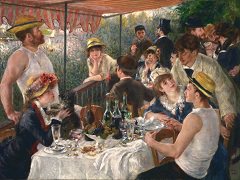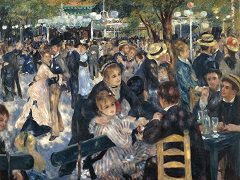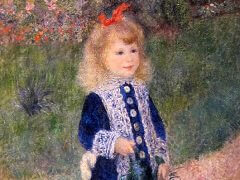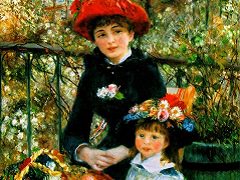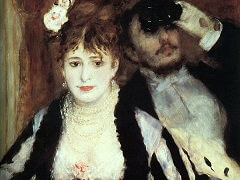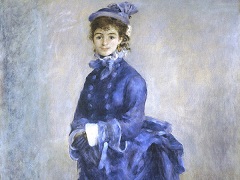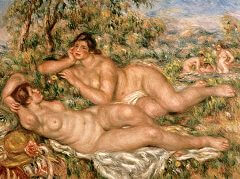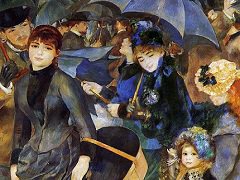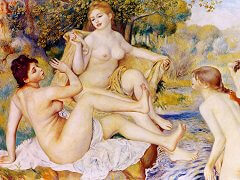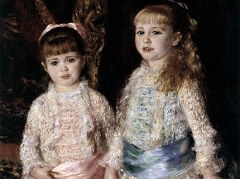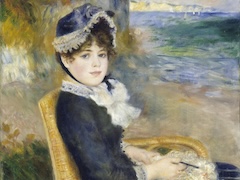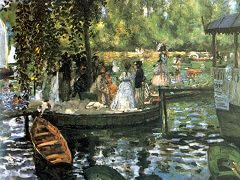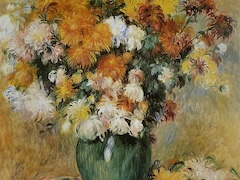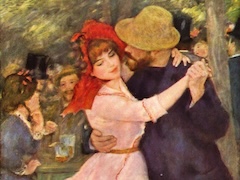Seated Young Woman Nude - by Pierre-Auguste Renoir
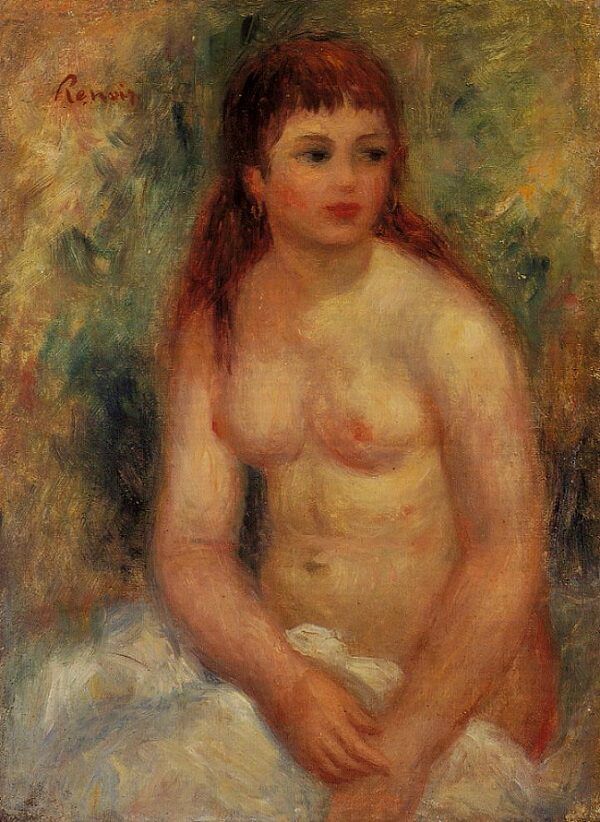
For Renoir, painting was a free and natural act, uncluttered by theory and unadulterated by pretension. His study of a seated nude girl, once purchased by Rodin and now in the Rodin Museum, is an ingratiating illustration of this quality in his art. It has all the clearness and brightness of a sketch with no sacrifice of technical resolution in its forms and expression.
The subject is pleasantly familiar. She is young and clean and fresh. Though her gaze is casually averted, the whole character of her being is one of frank and open-eyed delight in the special powers of her femininity. She is a completely natural creature, untainted by the sins of Eve, her contemplation free from inner conflict. Her role as a model is not, however, one of an empty, passive drudge. For the artist and, one feels, for herself as well, her state reveals the strength of affirmation.
The pose sets much of the tone of the composition. For all its apparent informality, it composes into another of those grand pyramids that so often lend a stable breadth to Renoir's canvases. Within its simple containing shape the body assumes a relaxed and spontaneous posture as it turns easily on its axis. The dominating reserve of the pose carries into the execution of the picture. The individual forms are delicately understated. Although ironically this very work was once condemned for its drawing by a noted collector, who considered it unworthy of its author, it can now be appreciated as a remarkable example of his method. The prevailing softness of the forms finds clarity and substance in the selective focus achieved by precise, linear accents that describe with marvelous economy the turn of the neck, or the crease of flesh as the model's arm joins the shoulder near the breast, or the detachment of the right arm from the smooth drape that flows across her thighs. Aside from the area of the head, the interior modeling is but lightly suggested by a restricted range of pale tints alternating between warm pink and faint rose shading off into the neutrals of the half-lights - they cannot be called shadows. The face is ruddier, with accents of red-orange in the small, pursed mouth and blooming cheeks. The flowerlike glow of the flesh tints is sympathetically confirmed by the background, where a broadly indicated area of green, loosely suggesting foliage, serves with the blue-black of the hair to bring out the brilliant transparency of the skin colors. Patterns of sharp yellow and muted pinks add a degree of light-filled depth to the generally flat handling of the setting. There seems little doubt that the artist had once intended to develop further these laconic suggestions of landscape, but it is clear too that he recognized with satisfaction the effectiveness of their present state of enduring promise.

